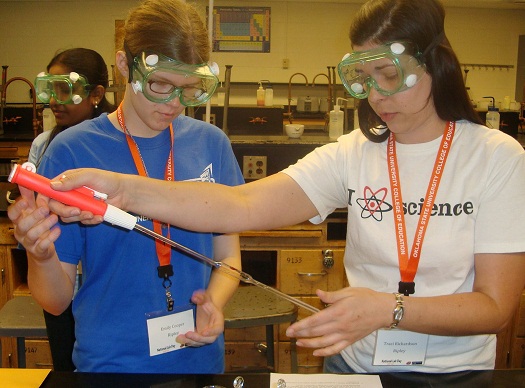Vision for STEM center CRSTL clear
Thursday, November 10, 2011

At a time when the United States’ leadership role is threatened in the global economy,
Oklahoma State University and others are moving to make a difference by promoting
transformative research to encourage new innovations.
That effort is taking shape at OSU in the form of a new center for research in STEM - Science, Technology, Engineering and Mathematics, which has opened its doors in the College of Education to promote collaborative work among faculty and improve research. The Center for Research in STEM Teaching and Learning (CRSTL), formally launched this fall, will focus on transformative research that encourages and enables bold efforts and creative enterprise to help sustain the United States’ leadership role in the global economy.
“It is an idea whose time had come,“ said Julie Thomas, the director for CRSTL. “My
vision is that it will enable conversations that would normally not happen, that it
would allow cross-college communications so that we can have more innovations.”
Thomas, the Frank and Carol Morsani Endowed Chair in Science Education, spearheaded
the planning for the center, which she hopes will serve as an intellectual home for
the generation, dissemination and improved learning in STEM.
Citing Native Americans as an example, Thomas said she was concerned about young learners today—how educators can “improve instruction for them to think about careers in STEM.”
“I want to be flexible and responsive to the faculty,” said Thomas. “Together we can work towards developing teaching methods and curriculum that ensures excellence and equality for the learners.”
CRSTL aspires to provide opportunities for university faculty, pre-service and in-service teachers, school administrators, informal educators and community leaders. The goal is to improve PK-20 student learning, teacher preparation and teacher professional development in science and development in STEM.
Researchers and faculty will imagine and innovate effective outreach plans that will disseminate their research findings to a broader audience through CRSTL, said Thomas. She notes the idea has received positive responses so far and she realizes it will be important that lines of communication are established between the center and colleges.
“CRSTL is an example of OSU’s commitment to being a leader in STEM education,” said Robert Davis, interim dean of the College of Education. “We appreciate the efforts of Dr. Thomas and faculty across campus who will be collaborating on research projects to impact teaching and learning in these important areas.”
The initiative also demands maintenance of quality work and efforts while maximizing
opportunity. “I do not want to be so busy with work to not maintain quality,” said
Thomas, who hopes to develop “a rapport and history of making a difference.”
“We want people to come to us to help them develop innovative research proposals
and curriculums,” Thomas explained.
*Esther Nakkazi worked as an intern with OSU Communications last month. Nakkazi was among a group of visiting journalists, farmers, community leaders and policy makers from Kenya and Uganda who spent several weeks on the OSU campus. The citizen exchange program was sponsored by the OSU Department of Agricultural Education, Communications and Leadership.
